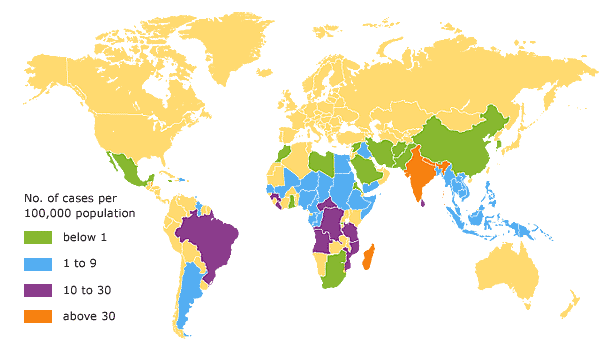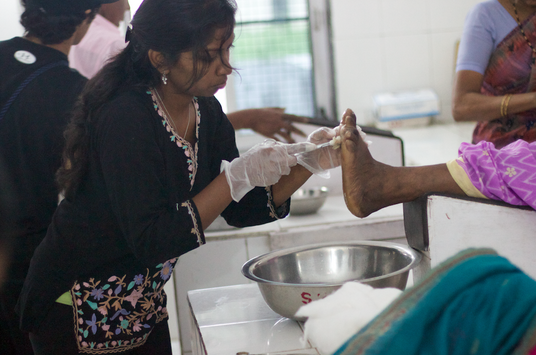To most of us reading this, curled up in front of our laptops, the thought of Leprosy infection is a far-off, ancient idea that has almost no bearing on the cozy lives we live right now, under the wing of modern health advances. But it does exist. And in some parts of the world, it’s still wreaking havoc.
Leprosy, or Hansen’s disease, caused by the microorganisms myobacterium lepromatosis and myobacterium leprae, is one of the oldest known human diseases, with recorded outbreaks dating as far back as 1550 BC.The infecting bacteria attack the peripheral nervous system, which leads to loss of sensation in affected areas; because patients lose the ability to feel pain in these regions, recurring injuries to the area can lead to the loss of limbs if they are not treated properly.
While rates of leprosy infection have decreased significantly around the world , it still remains a global public health issue because it has not yet been fully eradicated, despite the fact that effective treatments for it have been available since the 1970’s, and that 95% of people around the world already have a natural immunity to leprosy. This failure to wipe out the disease is due almost entirely to the social stigma attached to it; particularly in countries such as India where the amount of individuals infected with leprosy is in the hundreds of thousands, among the highest in the world. The situation in urban slums and rural areas is even bleaker, with their number of new leprosy cases being up to five times greater than the national average.

Since India is traditionally noted as the country of origin for this historic disease, which then spread across the world via wars and trade, the stigma against the disease and those affected by it is many times stronger in Indian communities than in most other parts of the world. Patients of leprosy in India are ostracized from nearly every facet of society; infected individuals are rejected employment opportunities, and are still denied even after being treated and cured. Having any history or affiliation with the disease is effectively synonymous to cutting any and all social ties, which unfortunately also affects the family and close friends of diagnosed individuals. Adult family members of leprosy patients are also denied employment, while the children are teased and bullied at school, their futures just as negatively impacted as their diagnosed relatives’.
For this reason, many people who start to feel symptoms associated with leprosy stay quiet instead of seeking treatment. If word were to get out about even their suspicions of catching the disease, their lives and the lives of their loved ones would be changed forever. This has led to steady increases in the amount of infected individuals across the country as recently as in 2011, for many are far too afraid to accept their diagnoses, let alone seek the treatment they need. (infographic here) Health professionals have recently developed campaigns to raise awareness of leprosy’s now relatively low risk factors, and to clarify that the amount of fear associated with leprosy throughout history need not be felt anymore today. The campaigns include information such as: the fact that leprosy is among the least contagious communicable diseases, it is easily treatable if caught in a timely manner, and that most humans already have a natural immunity to it, considering the genome of myobacterium lepromatosis/leprae has not changed at all since medieval times. The Modified Leprosy Elimination Campaign (MLEC), started by the Indian government in 1997, is one such movement which aims to raise awareness about the true nature of the disease, detect unreported cases, and encourage untreated individuals to undergo multiple drug therapy. Since its introduction in 1997, it has gone through five waves of renewal and has led to the treatment of 450,000 leprosy patients.

Project RISHI’s efforts in India supplement these health campaigns, as they work with Anandwan, a village in rural Maharashtra that works to house and rehabilitate patients of leprosy. Along with taking trips out to the area to give medical aid and supplies, Project RISHI raises awareness about related social and health issues, and aims to alleviate the social stigma attached to being infected with leprosy.
